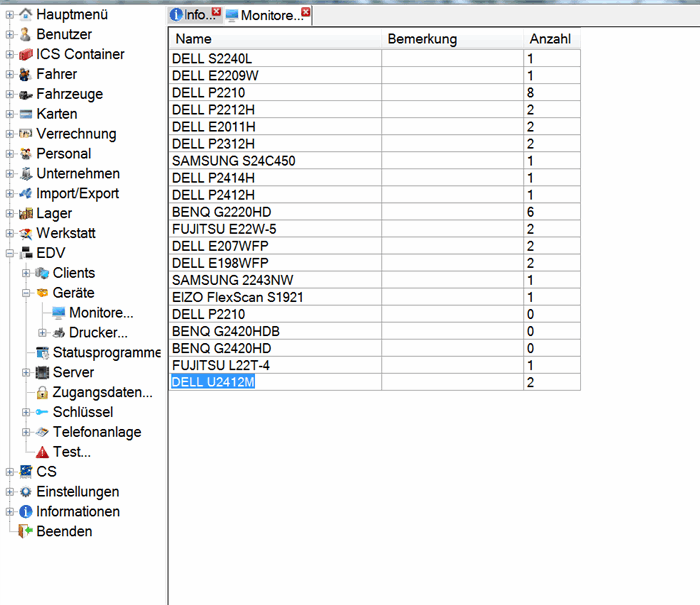

Select the Edit menu item and select its ShortcutKeys property in the properties window. For example, to set a shortcut key CTRL + E, for the Edit menu − When you set a shortcut key for a menu item, user can press the shortcut from the keyboard and it would result in occurrence of the Click event of the menu.Ī shortcut key is set for a menu item using the ShortcutKeys property. In other words, you change the text property of the file menu to &File. Setting access keys for a menu allows a user to select it from the keyboard by using the ALT key.įor example, if you want to set an access key ALT + F for the file menu, change its Text with an added & (ampersand) preceding the access key letter.
Menustrip not showing vb.net code#
When the above code is executed and run using Start button available at the Microsoft Visual Studio tool bar, it will show the following window −Ĭlicking on the Enable Project button enables the project menu − ProjectToolStripMenuItem1.Enabled = FalseĪdd a button control on the form with text 'Enable Project'. You will find that the previous menu does not close automatically and still retains the blue background. Move the mouse to the ComboBox menu item. Move the mouse over the menu item with submenu items. Let us disable the Project Menu on the menu bar. After this, it still shows various incorrect Hover effects. The Enabled property allows you to disable or gray out a menu item. When the above code is executed and run using Start button available at the Microsoft Visual Studio tool bar, it will show the following window:Ĭlicking on the Show Project button displays the project menu − Private Sub Button1_Click(sender As Object, e As EventArgs) _ ProjectToolStripMenuItem1.Visible = FalseĪdd a button control on the form with text 'Show Project'.Īdd the following code snippet to the Button1_Click event − Private Sub Form1_Load(sender As Object, e As EventArgs) _ Let us hide the Project Menu on the menu bar.Īdd the following code snippet to the Form1_Load event − The Visible property of the ToolStripMenuItem class allows you to hide or show a menu item. In this example, let us continue with the example from the chapter 'VB.Net - MenuStrip control'. Occurs when the value of the CheckState property changes. Occurs when the value of the Checked property changes. The following are some of the commonly used events of the ToolStripMenuItem control − Sr.No.

Gets or sets a value indicating whether the shortcut keys that are associated with the ToolStripMenuItem are displayed next to the ToolStripMenuItem. Gets or sets the shortcut keys associated with the ToolStripMenuItem. Gets a value indicating whether the ToolStripMenuItem appears on a multiple document interface (MDI) window list. The Menu Strip is a feature you will see on every application today. Code: Dim f As New frmTimeSheet f.MdiParent Me f. The following code shows how I load the Child Form. I have the MDI Parent's property 'IsMDIContainer' set to true. However, when the Child form is shown, the MenuStrip does not show up. Gets or sets a value indicating whether the control is enabled. This tutorial will introduce the Menu Strip in Visual Basic 2008. Upon program execution, the Parent form calls a Child form that also has a MenuStrip control. Gets or sets a value indicating whether a ToolStripMenuItem is in the checked, unchecked, or indeterminate state.

Gets or sets a value indicating whether the ToolStripMenuItem should automatically appear checked and unchecked when clicked. Gets or sets a value indicating whether the ToolStripMenuItem is checked. The following are some of the commonly used properties of the ToolStripMenuItem control − Sr.No. Properties of the ToolStripMenuItem Control Complete the menu structure shown in the diagram above. When you add a sub-menu, another text box with 'Type Here' text opens below it. Click the Type Here text to open a text box and enter the names of the menu items or sub-menu items you want. You handle these menu items through the click events in a menu system. Drag and drop or double click on a MenuStrip control, to add it to the form. The user should be able to manage content of textbox using menu.ġ.The ToolStripMenuItem class supports the menus and menu items in a menu system. Supposedly, we need a form with a menu (two-level one, not to be considered as a simpleton), a label and a textbox. A recipe is simple: a bit of text editor (Intellisense-enabled is preferable), a piece of rich text or even a text file, and a keyboard. Well, why don’t we create a small example by using just bare hands. Every powersheller chooses the way one creates user interface. Moreover, there is no common universal tool. As can be clearly seen from the survey Ravikanth conducted here , the great majority of powershellers do write GUI.


 0 kommentar(er)
0 kommentar(er)
